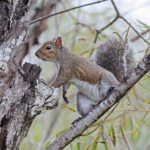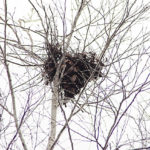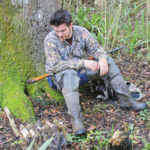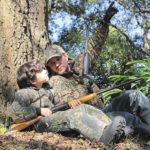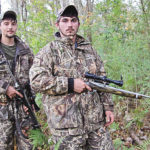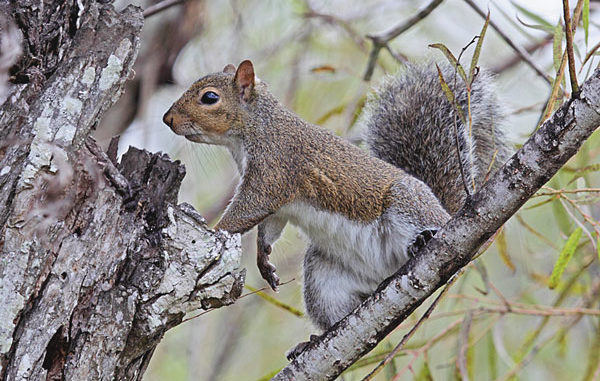
A change in tactics makes this arguably the best time of year to target bushytails.
From the piney woods of the north to the alluvial Mississippi River basin’s bottomland hardwoods to the coastal marshes — all across Louisiana there is a certain quietness that seems to take over in late winter. No longer do you hear the mufflers of four wheeler engines running in the woods, or the sound of a rifle shot bringing its result to you at the speed of sound.
In fact, with so few leaves on the trees, even the breeze is hushed to some degree, with you alone to sort out the matter — deer season is over. What’s left? How about squirrel hunting?
For the past decade, much has changed. The growing “business” of deer hunting has left small-game hunting, particularly where squirrels are concerned, something most hunter’s grandpas reminisce about.
Essentially with somewhere close to 120 days to hunt deer, most basic hunting licenses that allow you to hunt small game are wasted; other than the fact you must have one prior to buying a big-game license.
No one who has gone to the efforts of scouting, juggling deer stands, planting food plots and sitting countless hours wants a squirrel hunting club member to mess up their hunt. What’s more, that same thought process includes public lands as well.
What has happened is the majority of folks have skipped right over chasing bushytails, opting for horns and deer sausage. And, really and truly most youngsters, who should be cutting their hunting teeth on squirrels, are pushed right into big-game animals, thus missing out on critical woods skills that pay dividends for larger quarry later on.
Late winter, which is more spring-like in Louisiana, is perfect for getting back to small-game basics, and there just may be no better opportunity to harvest squirrels.
Logan Barrilleaux, 19, has learned to appreciate the art of squirrel hunting, and prefers the late season when doing it.
“What I like about late-season squirrel hunting is the woods are more open, there’s less leaves on the trees, and though those things make them a little more skittish, we use 22s with scopes giving us a little advantage on them,” he said. “We use big scopes, and I recommend using a 4×12. With a big scope, you can shoot what seems up close, but it’s actually a good distance away.”
Late-winter squirrel hunting for the most part isn’t an up-close proposition, when considering what they are up against trying to stay alive. The annual bird migration includes numerous raptors that have to eat too.
What’s more, on the ground where squirrels do much of their winter foraging are quadrupeds such as fox, bobcats and coyotes to be concerned with. These predators, like the raptors overhead, would like nothing more than to make a good meal out of an unsuspecting bushytail.
For Barrilleaux, the frustrations of getting close left him lamenting to his grandpa one day.
“I was complaining,” Barrilleaux recounted. “I said to my grandpa, ‘I can’t get close to them. I’m cracking too many limbs and I’m going as quiet as I can, and it still doesn’t work.’ He had an old pair of moccasins for going out in the woods, and he let me use them. Now, we’ll use moccasins because we can feel the sticks underneath our feet. Instead of cracking it, you can ease your way over it — you can feel it, so you don’t break it.”
Louisiana Department of Wildlife and Fisheries biologist Fred Kimmel says late season is a tough time, but according to the upland game study leader, it’s the getting out that’s important.
“With people hunting deer so much, that tradition of small-game hunting is sort of dying a slow death,” he said. “It’s a tough time to hunt squirrels. The one thing about the trees having no leaves is it makes it easy to see them, but they also see you. That’s something people will want to be cognizant of. They’ll see a mile off. But anything that gets people out is certainly a good thing.”
Barrilleaux’s tactics for late-season squirrels not only include elimination of sound, but he focuses also on concealment.
By using stealth that just may be something out of a Marine Corps sniper’s handbook, Barrilleaux gets close.
“A lot of times we’ll use a leaf suit to sneak up on them,” he said. “If you use good camouflage and a good pair of moccasins, you can get right up on them. And if they do see you, they don’t seem to pay as much attention.”
Hunters who use leafy suits should be sure to be knowledgeable of hunter-orange requirements, particularly on wildlife management areas and national wildlife refuges.
When it comes to squirrels, most folks think nuts when it comes to the foods they eat. Though acorns and wild pecans are preferred food for squirrels during the fall, the pickings can be mighty slim by late winter. With much of that mast crop gone, what hunters should know about squirrels is that they are pretty omnivorous.
Kimmel points out their food preferences are fairly broad reaching a wide spectrum.
“We often think of them typically eating nuts and things,” he said. “But when it comes down to surviving, they’ll eat just about anything. They’ll eat fungus, or even grubs in the ground if that’s what it takes. So, in the late winter, they’re kind of running around on the ground looking for what acorns are left and all kinds of stuff. They’re pretty much on the ground rooting for anything.”
Other foods that squirrels eat during late winter are maple tree buds, myrtle tree seeds, hackberry seeds and buds. They’ll also nibble on soft willow bark and forage along the ground for seeds dropped by magnolia trees and pine cones.
Where a waterside approach through the woods is possible, I am convinced this is one of the most successful tactics you’ll ever employ. Squirrels don’t seem to pay as much attention to what’s going on from the bayou.
During a float trip down Saline Bayou through part of the Kasatchie forest last winter, on a couple occasions two or three squirrels could be seen rooting together on the ground, until our intentions were made known. This tactic is also effective in the coastal marshes. Many a squirrel has been harvested from a pirogue.
When you talk about people who seriously hunt squirrels in February, you’re usually talking about those who focus on using dogs. Jack Russell terriers perhaps are the most popular breed of dog you’ll find accompanying a hunter. But, really and truly, if you have any old dog that sticks its nose to the ground and likes to trail and chase things, chances are in some of the more prime squirrel areas, it will be barking up a tree.
That’s not saying they’ll outdo a trained dog — nothing beats a well trained dog — it’s simply another way for not just hunters to get out during the late winter, but Fido too. And, who knows what will happen? Lots of dogs enjoy putting squirrels in their place.
“We’ll do a little bark at them and get them to stop,” said Barrilleaux, who likes to do a little calling when he hunts squirrels. “A lot of times they’ll stop and bark back. But that’s when we take our shots at them.”
Some of the best-kept secrets when it comes to public areas to hunt squirrels might surprise you. Kasatchie is vast, with plenty of opportunity, but there’s also Sherburne WMA, Three Rivers WMA and Bayou Teche NWR, just to name a few. A quick look online at the LDWF website along with a click on WMAs just might be an eye-opener.
